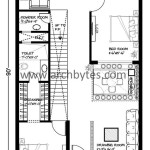Delving into the Heart of Medieval Manor Floor Plans: An Architectural Journey
Medieval manors, the epicenters of feudal life, were intricate and fascinating structures that reflected the social hierarchy and daily rhythms of their inhabitants. The floor plan of a medieval manor was meticulously designed, each room serving a specific purpose and catering to the needs of its occupants. Join us as we embark on an architectural exploration of the essential aspects that shaped these captivating spaces.
The Great Hall: A Hub of Activity and Symbol of Power
The great hall, the heart of the manor, was a multi-purpose space that served as a dining room, meeting area, and courtroom. Spanning the entire width of the building, the great hall exuded grandeur and symbolized the lord's authority. Its vast size allowed for large gatherings and feasts, showcasing the wealth and status of the manor's owner.
The Solar: A Private Sanctuary for the Lord and Lady
Adjacent to the great hall, the solar was the private living quarters of the lord and lady. This secluded suite comprised a bedchamber, dressing room, and a small private hall. The solar offered a tranquil escape from the bustling activities of the manor, providing its occupants with privacy and comfort. Its elaborate furnishings and tapestries reflected the refined tastes of its occupants.
The Buttery and Pantry: Essential Storage Spaces
The buttery and pantry were vital storage rooms located near the great hall. The buttery stored alcoholic beverages, while the pantry housed food supplies, spices, and other culinary essentials. These rooms were crucial for maintaining the smooth operation of the manor's daily life, ensuring a steady supply of provisions for both the lord and his household.
The Chapel: A Place of Worship and Spiritual Reflection
Many medieval manors had their own chapels, providing a dedicated space for religious observances and private contemplation. The chapel's design often mirrored the grandeur of the great hall, featuring intricate stained-glass windows and elaborate altars. Its presence underscored the importance of religion in medieval society and served as a focal point for the spiritual lives of the manor's inhabitants.
The Kitchen: A Culinary Hub
The kitchen was the bustling epicenter of the manor's culinary operations. Typically located in a separate outbuilding for safety reasons, the kitchen was equipped with large hearths, ovens, and various food preparation tools. It was here that skilled cooks prepared meals for the entire household, catering to the dietary needs of both the lord's family and the numerous servants.
Other Essential Rooms and Spaces
In addition to these key rooms, medieval manors featured a variety of other essential spaces. Bedrooms for the servants and guests were typically located in the upper floors or in separate outbuildings. Guard chambers ensured the security of the manor, while stables housed the horses and other animals. The floor plan of a medieval manor was a testament to the complex and multifaceted nature of medieval life.
Medieval Manor Floor Plans: A Reflection of Society and Daily Life
The floor plan of a medieval manor was not merely an architectural design; it was a reflection of the social hierarchy, economic activities, and daily rhythms of medieval society. Each room served a specific purpose, contributing to the smooth functioning of the household and reflecting the status and needs of its occupants. By exploring these essential aspects, we gain a deeper understanding of the lives and routines of those who inhabited these remarkable structures.

Image Result For Plan Of A Medieval Manor House Floor Plans

Plans Of The Ilkley Manor House

Plate 3 Ground And First Floor Plans British History

Featured House Plan Bhg 6133

Balm Castle House Plans Luxury Home

Preliminary Design For Tüköry Mansion Study A Manor House Scientific Diagram

Hatfield House Castle Floor Plan

Plate 3 Ground And First Floor Plans British History

Castle House Plan 6 Bedrms Baths 9465 Sq Ft 116 1108

Tudor Home Plans Large Manor House With Steep Rooflines








